This post covers some impressive Almshouses in South Devon: specifically in Moretonhampstead, Newton Abbot, Wembury and Plymouth. We start with Moretonhampstead, now owned by the National Trust
'Recorded as 'new' in
1451, the building was converted into eight almshouses in 1637. Having
been used as a poorhouse and private residences during the following
centuries, it was given to the National Trust in 1952 and today consists
of two cottages.
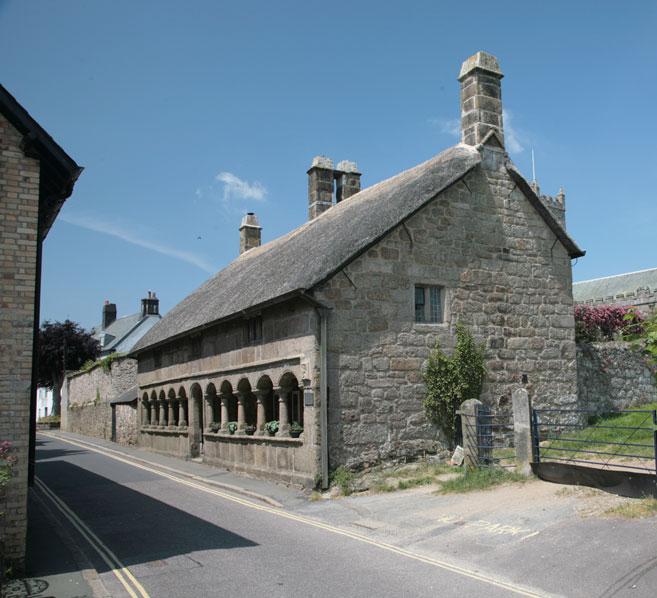

The first of the almshouses in Newton Abbot are the Mackrell's Almshouses in Wolborough Street.
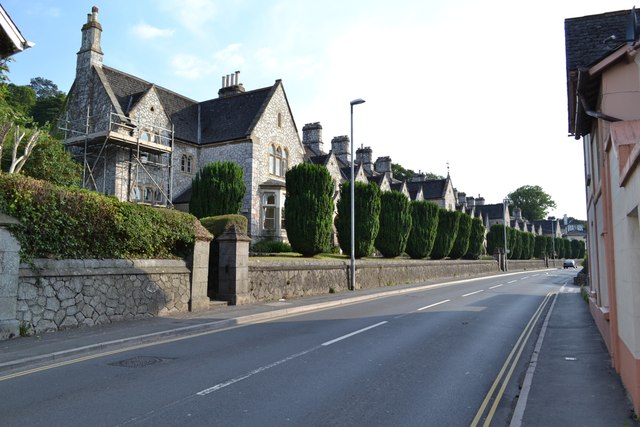
(From https://www.geograph.org.uk/photo/4109108) The 40 almshouses were designed by JW Rowell, built in 1874 and extended in 1894.The walls are of Devonian limestone crazy-paving rubble. The slate roof is continuous with moulded rubblestone ridge stacks to party walls. The building is double-depth in plan - there are houses front and back, in similar style. The southwest (right-hand) entrance has an inscription in the tympanum which reads "By the grace of God the Mackrell alms-houses built and endowed by Thomas and Sophia Mackrell, natives of Wolborough were extended by the erection of eight additional dwellings in the year of Our Lord 1894." A similar inscription to the northeast (left-hand) entrance is dated 1874.
Here is a more detailed view of the Almshouses:
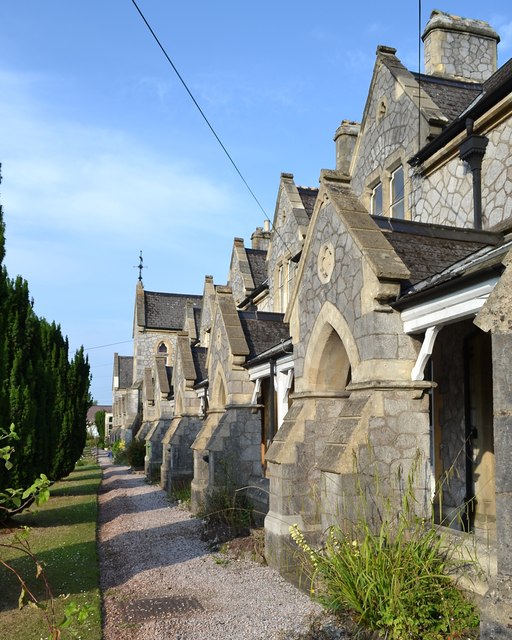
A group of 4 almshouses in 109-115 East Street dating from 1845 are built in a Picturesque Tudor style. Lady Lucy Reynell, wife of the owner of Forde House Torquay
Road, originally endowed the almshouses in 1640. She intended them to
accommodate priests widows, "the relicts of preaching ministers, left
poor, without a house of their own". The original building in
Torquay Road was demolished in 1790 and rebuilt in East Street
nearer to the town centre.
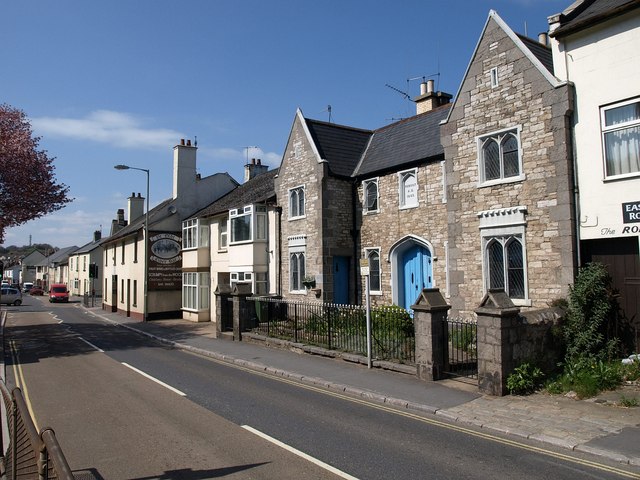
Also in East Street, at 133-147, are the Haymans Almshouses.
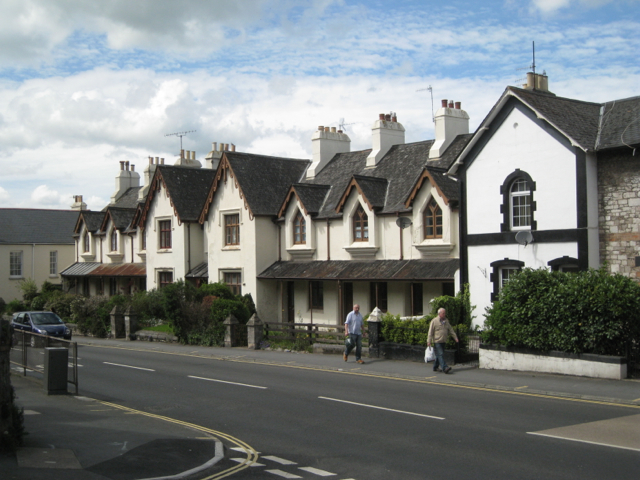
They date originally from 1576 when Robert Hayman endowed properties in East Street "for the better maintenance and relief of poor people". These properties included almshouses. They were rebuilt in 1840 as this symmetrical terrace of eight almshouses in what Pevsners calls the Regency Gothic style.
Continuing South west there are two more interesting almshouses. The first are the delightful Sir Warwick Hele's Almshouses in Wembury. They consist of 6 houses: built in 1685 and renovated in 1975. Sir Warwick was the High Sheriff of Devon at the time. Ange I walked past them almost exactly 10 years ago while we were walking the South West Cost Path.
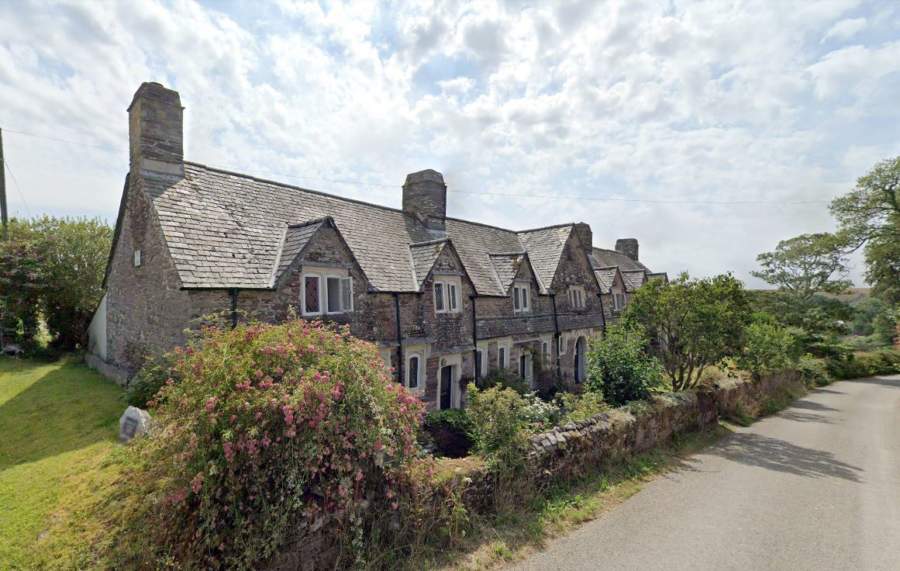
Finally, in Plymouth we reached Lanyon House in Green Street. The
original almshouse was built in 1679 with £300 left in a will by John
Lanyon, ex Lord Mayor of Plymouth and a Friend of Samuel Pepys. The
present almshouses were moved to their site in Green Street in 1868, and
renovated in 1977. They are still in use as Almshouses.
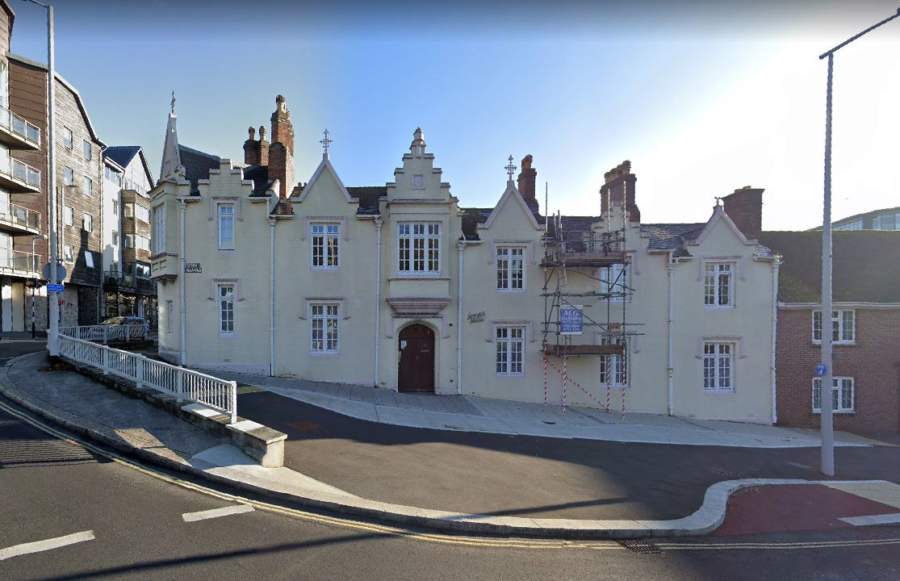
Finally, a mention for the Pearn Almhouse Trust in Higher Compron, which was funded by a legacy from a local benefactor, Edwin Alonzo Pearn, in 1893. The self-contained accommodation has three separate buildings.
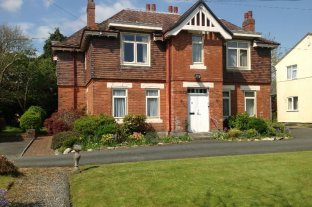
No comments:
Post a Comment